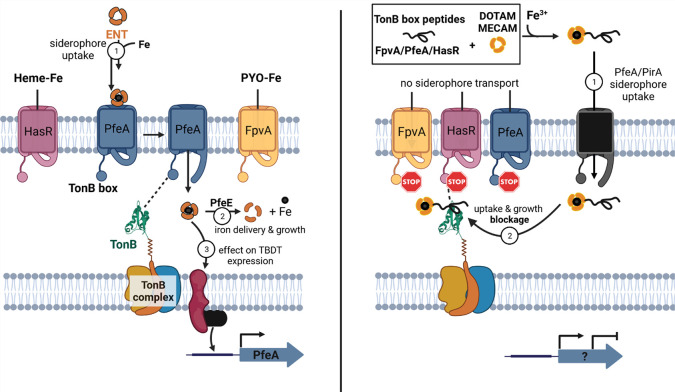Figure 1.
Iron delivery by enterobactin (ENT) and envisioned suicide TonB siderophore strategy. (Left) Iron chelators such as heme, enterobactin (ENT), and pyoverdine (PYO) are recognized by their corresponding TonB-dependent transporters (TBDTs) HasR, PfeA, and FpvA in P. aeruginosa. In the case of ferri-enterobactin, after internalization, the esterase PfeE hydrolyzes the siderophore to release the iron. A fraction of ferri-enterobactin interacts with the two-component system PfeS/PfeR to regulate the transcription of pfeA and pfeE. (Right) Schematic depiction of the competitive inhibition of the TonB–TonB box interaction by peptide siderophore conjugates. Synthetic siderophores DOTAM and MECAM are coupled to TonB box peptides originating from the FpvA, PfeA, or HasR transporter amino acid sequence. The bacteria-specific vectors are transported into the periplasm and interfere with TonB function, thereby inhibiting the uptake of additional iron or heme and consequently repressing bacterial growth.

